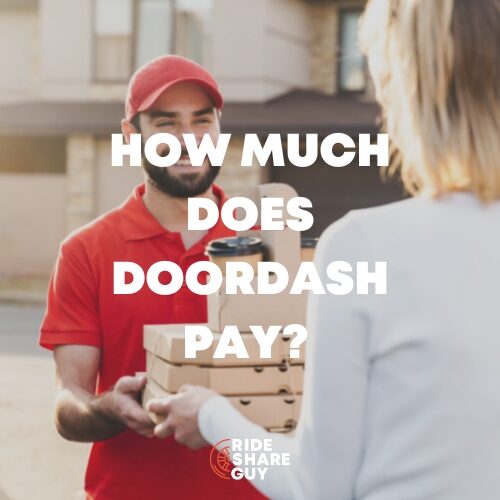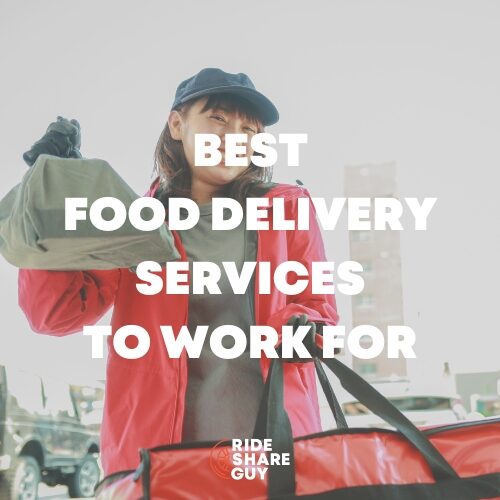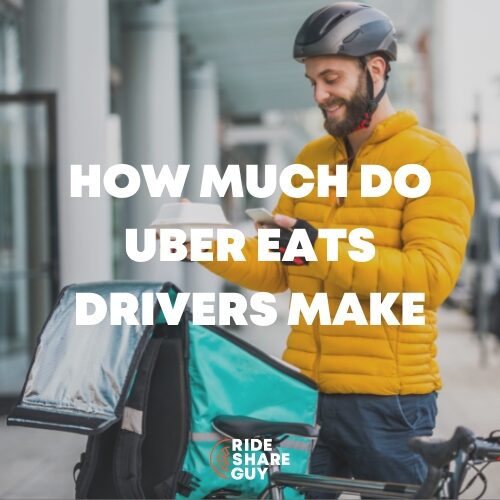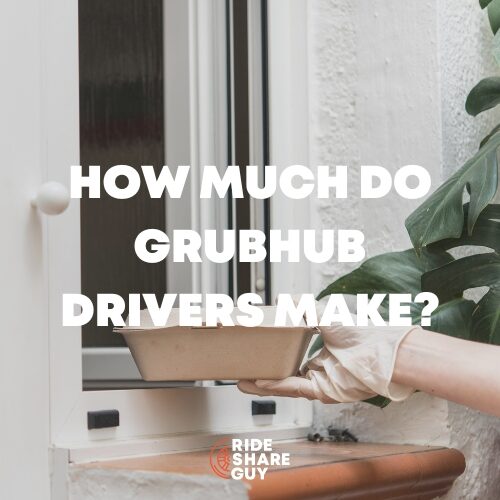Are food delivery companies taking too much from drivers, or are the fees and take rates normal for the cost of doing business? Senior RSG contributor Sergio Avedian shares what he’s seeing as a food delivery driver, and his opinion on the take rate that companies like Uber Eats are making from drivers’ work. Do you agree or disagree with his takeaways?
Change is good sometimes, it gives you a chance to discover new ways of making some extra cash, mostly on a part-time basis. Since rideshare is experiencing its usual seasonal winter slowdown, I started doing food deliveries, mostly Uber Eats. While I am on the waiting list for Doordash as well as Grubhub, my market is oversaturated with drivers, so it may be a while.
I have previously written about my delivery experiences, but today I want to share my results of strictly doing deliveries over the past two weeks. As we all know the top driver complaint these days is about Uber’s take rate (commission) when it comes to rideshare, I’ve discovered that after two weeks of delivering food, food delivery might as well be charity.
Wondering what Uber’s take rate is? Sergio shows you how to calculate Uber’s take rate here: Is Uber’s Take Rate Consistent On All Rides? How Much Does Uber Take?
That’s right, if rideshare drivers thought their earnings were paltry, wait until you see my earnings with food delivery!
Is Driving for Food Delivery Companies Basically Free Work?
Take a look at these offers. Are these customers really expecting to get their food delivered on time? I would like to know who is accepting these orders.
I have been selective when it comes to accepting rideshare rides the past seven years, and I have applied the same rules to food delivery. In fact, my motto of NO TIP – NO TRIP has my AR (Acceptance Rate) hovering just under 20%. What happens when a driver sees the following delivery requests?
Does Uber really think that drivers can survive on less than $5 for half an hour of work when the two deliveries are combined? Again, who is accepting these deliveries? Know your worth!
Food Delivery Results After Two Weeks
I think I did as well as I could with the seasonal slowdown. Adding the Prop 22 (California driver benefits, 120% of minimum wage + 30 cents a mile on Active Time) money to the weekly earnings makes for respectable numbers for part-time work.
As a rideshare driver, I had never received Prop 22 money, but base rates on deliveries are so horrible, much worse than rideshare, so I have been receiving Prop 22 funds on a weekly basis.
What do you think, do you pay attention to your profitability metrics? Do you know what your costs are? Please tune in to SMTMC (Show Me The Money Club) live every Tuesday at 3PM PST on the RSG Youtube channel, we are here to inform and educate.
Uber’s Take Rate on 92 Deliveries
Unlike rideshare, Uber did not take away the ability to see the customer receipt for deliveries. Right after the trip, we are immediately able to calculate the take rate. Rideshare drivers should not complain about the high commissions. This is what it looks like in the delivery driver app.
This was a double order that took me 53 minutes to complete and drove a total of 3.7 miles.
Bottom line, Uber grossed $10.98 for this trip and my base fare was $7.20. Imagine, getting paid $7.20 for 53 minutes of work before expenses, what is this world coming to? Thank God for generous customer tips. Clearly, Uber made more than I did, that seems like the norm on pretty much every delivery with a few exceptions.
For the 92 deliveries I completed, my Base Pay without the Prop 22 adjustment and tips was $411.69. That comes to $4.47 cents a trip.
Uber, on the other hand took $590.68, for what? My car, my gas, my insurance, my depreciation, and the Uber algorithm manages to make $178.99 more than me on Base Fares alone. Don’t forget that Uber also charges the restaurant about 30% commission on each order!
However there is an equalizer in all this called Prop 22 in CA, after the end of the two-week period, I received the following email and credit from Uber.
My Gross Income $1202.19 (Including Prop 22 funds)
- $45.76 per Active Hour ($1202.19/26.27H)
- $13.07 per order ($1202.19/92)
- $4.02 per Active Mile ($1202.19/298.84M)
- Total Customer Pay $1613.56
- Uber Gross $411.37 {$590.68- $179.31 (Prop 22)}
- Uber Take Rate 25% ($411.37/$1613.56)
Takeaways for Drivers
It took me a few weeks, but I learned how to play this delivery game really well. I have consistently improved my numbers, but I think for my area at least, I have reached the glass ceiling. One thing I want to make clear for all California delivery drivers, please do not accept the orders seen above! Even with Prop 22 money, you will be on the losing end. Another fact is that Prop 22 is a customer/rider-funded program, and none of the gig companies contribute to it.
I have become extremely selective while driving for Uber Eats. Since the ping lasts more than 30 seconds for UE requests, I have more than enough time to do the math and figure out the most profitable trips for me. I am an independent contractor (IC), and I will not take garbage orders. I urge all other drivers to do so.
One part of the game I have really improved on is the Prop 22 money I get on a weekly basis now. Not only have I figured the math out when it comes to what order to accept, but I have also figured out how to maximize my Prop 22 earnings to become a major part (additional 20%) of my overall income. My split including the Prop 22 funds with Uber was 75%-25% in my favor.
What are you seeing in your market? How do your numbers compare to mine? Please comment below.
Final words, NO TIP – NO TRIP!
-Sergio @ RSG




